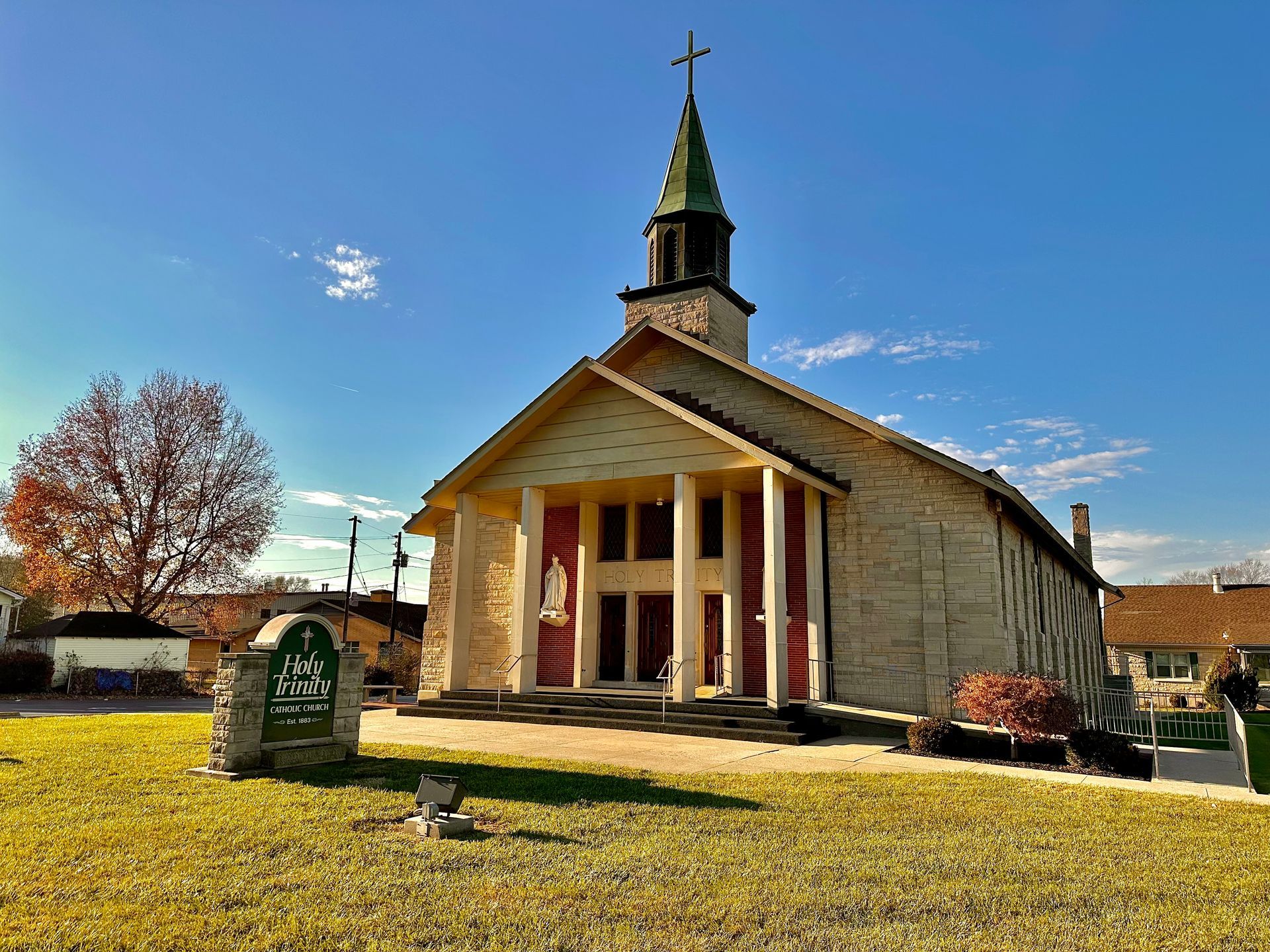This is paragraph text. Click it or hit the Manage Text button to change the font, color, size, format, and more. To set up site-wide paragraph and title styles, go to Site Theme.
Contact Us
Baptism
Amen, amen, I say to you, no one can enter the kingdom of God without being born of water and Spirit. (John 3:5)
The sacrament of baptism ushers us into the divine life, cleanses us from sin, and initiates us as members of the Christian community. It is the foundation for the sacramental life.
At baptism, the presider prays over the water:
Father, look now with love upon your Church, and unseal for her the fountain of baptism. By the power of the Holy Spirit give to this water the grace of your Son, so that in the sacrament of baptism all those whom you have created in your likeness may be cleansed from sin and rise to a new birth of innocence by water and the Holy Spirit. (Christian Initiation of Adults, #222A)
Freed from Sin
Baptism frees us from the bondage of original and actual sin. Water is poured in the name of the Father, the Son and the Holy Spirit. Today, the sacrament of baptism is often performed on infants, shortly after birth. Adult baptisms take place at the Easter Vigil through the restored Rite of Christian Initiation for Adults. Adults or children who have been baptized in a valid Christian church are not baptized again in the Catholic church. As we say in the Nicene Creed, “I confess one Baptism for the forgiveness of sins…”
The Catechism
teaches:
"The fruit of Baptism, or baptismal grace, is a rich reality that includes forgiveness of original sin and all personal sins, birth into the new life by which man becomes an adoptive son of the Father, a member of Christ and a temple of the Holy Spirit. By this very fact the person baptized is incorporated into the Church, the Body of Christ, and made a sharer in the priesthood of Christ" (CCC 1279).
Baptismal Symbols
- Water – The waters of baptism recall Jesus’ own baptism by John the Baptist in the river Jordan. Water is a symbol of cleansing and renewal as we begin a new life in Christ. We are washed clean of sin.
- Oil – At baptism we are anointed into the life of Christ as “priest, prophet and king.” A cross is traced on the candidate’s forehead as a reminder that we are inheritors of the Kingdom of God.
- Light – The baptismal candle is lit from the Paschal or Easter candle that stands in the church as a sign of Christ’s light in the world. At baptism, we receive the light of Christ and are called forth to share this light with the world.
- White garment – The white garment that is placed upon us at baptism is a symbol of Christ’s victory over death and his glorious resurrection. Likewise, the white garment or pall that is placed over the coffin at the time of death recalls our baptismal promises and reminds us that we are destined for eternal life.
While in ordinary circumstances, sacraments in the Catholic Church are administered validly by a member of the ordained clergy, in an emergency situation, the sacrament of baptism can be administered by anyone.
In case of necessity, any person can baptize provided that he have the intention of doing that which the Church does and provided that he pour water on the candidates head while saying: “I baptize you in the name of the Father, and of the Son and of the Holy Spirit" (CCC 1284).
Holy Trinity Baptism Form
Holy Trinity Baptism Form
To serve as a Catholic godparent, an individual must meet specific requirements outlined by the Church:
• The person must be a practicing Catholic, attending Mass and receiving the sacraments frequently. Simply being baptized or culturally Catholic is not enough. They must also have received the sacraments of Baptism, Eucharist, and Confirmation. Baptism, Confirmation and First Communion certificates of the godparents from the parish(es) where they occurred must be sent to the office for Holy Trinity-Holy Rosary PRIOR TO BAPTISM.
• The person must have attained the minimum age of sixteen, unless an exception is granted by the pastor based on maturity.
• The person cannot be in an invalid marriage—such as those married outside the Church without a dispensation, remarried after divorce without an annulment, or cohabiting without marriage.
• The person must not be under canonical penalties, such as excommunication or public dissent from Church teachings, is also disqualified.
• The person must not be the child’s parent.
Furthermore, while non-Catholics cannot be godparents, a baptized non-Catholic may serve as a Christian witness, but only if accompanied by a Catholic godparent, and can be listed as a Christian witness in our parish's official sacrament record and on a baptismal certificate. In all cases, the godparent must be someone who lives according to the Catholic faith and can serve as a spiritual role model.
We want to hear from you.
Send us your details and we’ll get back to you to schedule a time to talk.
We want to hear from you
We want to hear from you
Send us your details and we’ll get back to you to schedule a time to talk.
